horticulture guruji
Onion Cultivation
Onion (Allium cepa) in India is also known as ‘Piyaj’. Onion is the most important commercial vegetable crop grown in India. It is used as a vegetable as well as salad. Onion is a rich source of Vitamin B and helpful against sunstroke. In India, it is cultivated mainly Maharashtra, Karnataka, Gujarat, Orissa, Tamil Nadu, Andhra Pradesh, Rajasthan etc. In this chapter, you will read in detail about its cultivation.
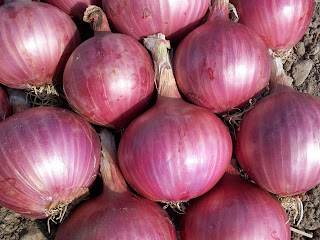
Other Name:- Piyaj, Piaj, Kanda, Dungli, Ganda
Botanical Name: – Allium cepa
Family: – Alliaceae / Lilliaceae
Chromosome No.: – 2n=16
Origin: – Central Asia
Edible part: – Bulb
Important Points
- India (12%) is 3rd largest exporter of onion after Netherland (21%) and Spain.
- India ranks 2nd in area and production after China.
- In India, Maharashtra is the leading producing state with 27.5% production of the country. With an area of 23.4%.
- Biggest onion market in India – Lassalgoan (MH).
- Foreign exchange earnings from onion -77% of among fresh vegetables.
- For seed production temperature is more important than day length.
- For bulb production day length is more important than temperature.
- Cultivated varieties having largest area – Orange and yellow.
- Malic acid present in onion.
- Aroma in onion is due to Allyl propyl disulphide.
- Onion is a long-day plant.
- Onion is Highly cross-pollinated due to protandry.
- Male sterility present in onion.
- Respiration rate of onion is very low.
- Anthesis time 5:00-9:00 AM.
- Green to dry ratio- 10:1.
- Flower Colour -White or Bluish.
- Pollinating agent Honey bee.
- Inflorescence type- Umbellate
- Potato Onion/ Multiplier Onion/ ever ready onion/shallot – Allium cepa aggregatum.
- Tree Onion/ Egyptian onion- Allium cepa viviparum.
- TSS of onion in maximum varieties 12-18%.
- It contains 86.8 gm moisture, 1.2gm protein, 11.0 gm carbohydrates, 0.01mg Riboflavin, 0.08 mg Thiamine and 11.00 mg Vitamin C per 100g edible portion.
Watch Lecture Video
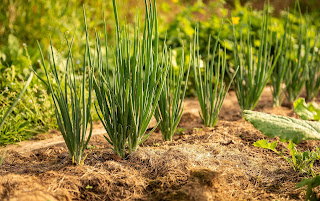
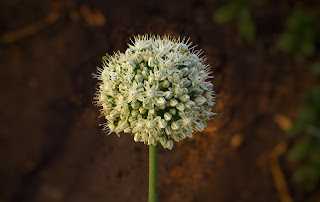
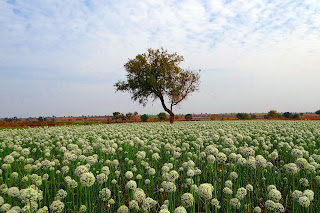

Area and Production
|
Sr. No. |
States |
2018 |
|
|
Area (000, H) |
Production (000, MT) |
||
|
1 |
Maharashtra |
507.96 |
8854.09 |
|
2 |
Karnataka |
195.28 |
2986.59 |
|
3 |
Madhya Pradesh |
150.87 |
3701.01 |
|
4 |
Rajasthan |
64.76 |
996.73 |
|
5 |
Bihar |
53.77 |
1240.59 |
|
6 |
Andhra Pradesh |
42.00 |
915.73 |
|
|
Other States |
270.35 |
4567.59 |
|
|
Total |
1284.99 |
23262.33 |
Source NHB 2018
Varieties
- Introduction
- Early Grano :- Yellow coloured, use as green onion
- Brown Spanish :- Yellow coloured
- Bermuda Yellow
- Selection
- Pusa White Round:- use as green onion
- Pusa red:- Male sterile line have been isolated
- Pusa Ratnar
- Arka Niketan
- Arka Pragati :- Suitable for Kharif as well as rabi season.
- Nasik Red :- Purple blotch resistant
- Patna Red
- Pusa White Flat :- Suitable for dehydration, use as green onion
- N-53:- Suitable for Kharif season
- Arka Kalyan :- Suitable for Kharif season, Purple blotch resistant
- Arka Bindu:- Exported variety, Small size
- Agrifound Dark Red
- Benglore Rose :- Small size
- Hybrid
- Arka Pitambar
- Arka Kirtiman
- Arka Lalima
Multiper varieties:-
- Agrifound red
- Co-3
- Co-4
Other Varieties
- Pusa Madhvi
- Agrifound Rose:- Exported variety, Small size, Pickling type
- Punjab Selection
- N-2-4-1
- Line 102
- Basant 780
- Co-2
- Co-1
- MDU -1
- BL -3
White Coloured varieties
- Agrifound Light Red
- Kalyanpur Red Round
- Udaipur 101
- Udaipur 103
- Hissar 2
- N-257-9-1
- S-48
Characteristic of suitable varieties for dehydration
- High pungency in varieties.
- White coloured varieties with White flesh which do not discolours on dehydration.
- High total soluble solids (15-20 %)
- Moisture should be around 80%
- High insoluble solid content (Not less than 1 %)
- Varieties have Low reducing to non-reducing sugar ratio
- The round shape of the bulb with a thin neck and small root zone.
- Varieties which are resistant to diseases, pests both in the field and in storge.
Climate
Onion requires a mild climate without extreme heat or cold and without excessive rainfall. The best temperature for bulbing is 130-230C. Onion is the hardy plant is withstanding in low temperature in the early growth stage. Sudden rise in temperature favours early maturity of the crop with a smaller sized bulb.
Soil
Onion can be grown in all types of soil such as light sandy loam to heavy clay. In heavy soil bulb development is slow due to this crop mature late as compare to light soil. Soil should be rich in organic matter, having good water holding capacity, deep and fertile. Soil pH ranging should be between 5.8-8.0. Onion is sensitive to highly acidic and alkaline soils.
Sowing Time
In India, sowing of onion is done two times.
Rabi Crop (main crop):- Seed sowing September and transplanting in October.
Kharif Crop:- Seed sowing in May -June and transplanting June-July.
Planting Method
- Transplanting Method
By raising nursery and then transplanting them in the main field. For raising nursery of one hectare about 10-12 kg seed are required for rabi season and 12-15kg seeds for Kharif season.
Seedbeds 1.2 m wide, 7 m long and raised 7-10 cm above the ground level prepare. Before sowing seeds should be treated with Thiram 2-3gm/Kg seeds. Seed should be broadcast or line sown on the beds. After sowing bed cover with a thin layer of FYM. After sowing lightly irrigate the bed with rose can.
The seedlings will ready for transplanting about 6-8 weeks after sowing, or when seedling attain 15 cm height.
The main field 3-4 times plough to make a fine tilth. The field should be divided into flat beds of convenient sized for irrigation. Planting should be done in lines 15cm apart, with a spacing of 8-10cm between plants. Irrigate the crop immediately after transplanting.
- Planting of Bulb Method
This method is used to get green onion for salad and suitable for Kharif season planting. Bulbs are used for planting the crop, they have dibbled 15 cm apart on the sides of 45 cm wide ridges, or in flatbeds. For one hectare of planting about 10-12 q of the small to the medium-sized bulb is required. For planting material (bulbs) previous year harvested crop small sized bulbs are utilized or new bulbs obtained from a seedling planted in June are used in October planting. Big sized bulbs are not used for planting because they produce flower stalk earlier. After 12-13 days of the planting of bulbs irrigate the crop.
Manure and fertilizers
Generally, 20-25 tonne/ha FYM should be added 30 days before sowing. Onion heavy feeder of Nitrogen and Potash. The Doses of fertilizers are depending upon variety and locality. In general, it requires about 120 Kg N, 50 Kg P,160 Kg K 15 Kg MgO and 20 Kg Sulphur. A full dose of P and K should be applied at last ploughing. Nitrogen should be applied in two splits viz fist half 3-4 week after planting and the second half-dose two months after transplanting.
Irrigation
Kharif crop requires 8-10 irrigation, whereas, late Kharif crop requires 12-15 irrigation for proper bulb development. Rabi season crop requires 15-20 irrigation in their entire life. The crop should be irrigated 10 days interval depending upon the soil and weather conditions. Soil moisture is essential at the time of bulb development stage.
Weed Control
Onion is shallow-rooted crop so frequent shallow cultivation should be given to the soil to kill the weeds and loosen the soil around the plant. Generally, 2-3 hoeing cum weeding is done during initial 1st 2 months of growth. After two months hand weeding is a practice to protect the plant roots for any damage.
Harvesting
The onion should be harvested when leaves turn yellow or dry. The crop is ready for harvesting in general 3-5 months of transplanting depending on the growing season. The bulbs are lifted with spade or khupi, free from earth and make a bundle with tying the top leaves. These bundles for curing are put in shade for 3-4 days. After curing, top leaves are removes and store in ordinary rooms.
Yield
The yield ranging between 250-300 q / ha depending upon the variety, soil, applied fertilizers.
Insect pest management
- Thrips (Thrips tabacii):- Thrips is an important pest of onion crop. Yellowish small insect sac the sap from leaves and silver-coloured strips or brown spots are seen on leaves.

Control
- Spray with 0.05% Monocrotophos, or Methyl demeton or Neem carnal oil.
- Onion Fly (Delia antiqua) :- Small grey fly such as house fly lays an egg in the soil around the plant. After the attack of this insect turn lower leaves yellow.
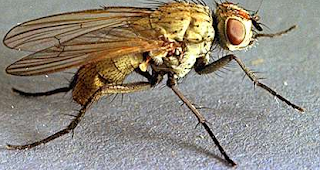
Control
- Spray on the crop with 0.1 % Malathion to control the onion fly.
Disease management
- Purple Blotch (Alternaria porri) :- Most favourable temperature for the disease is 280-300C. This disease more prevalent when heavy rainfall or planting is done in closer spacing. Purplish spots are seen on leaves.

Control
- When the disease has seen spray with Endofil M-45 @ 2.5 gm/Littre of water at 10-15 days interval.
- Grow resistant varieties viz. Nasik Red, Arka Kalyan etc.
- Bottom Rot or Basal Rot (Fusarium oxysporum):- Initial symptoms are seen as yellowing of leaves, die and discoloured and decayed of roots.
Control
- Avoid overwatering.
- Planting should be done at wider spacing.
- Use health plant material
- Storing bulb at 390C temperature.
- Black Mould (Aspergillus niger):- This is a very common storage disease of onion. The primary indication is dark staining of tissue. Tainted bulbs may show darkening at the neck, streaks or spots of dark on or underneath the external scales, and dark discolouration in wounded territories. In cutting edge organizes, the whole bulb seems dark and withered.
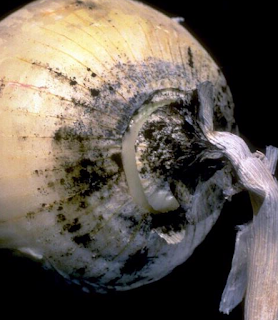
Control
- Follow crop rotation
- Maintain good drainage facility.
- Grow resistant varieties
- Storing bulb at 390C temperature.
Physiological disorders
- Bolting: – Bolting or premature emergence of flower/seed stalk is a major problem in onion. In field, such seed stalk is produced in a crop which is grown for bulb production. Seed stalk takes onion storage food and makes them hollow, lighter in weight and fibrous. All the plants do not bolt at the same time in the field only a few plants bolt. This problem reduces the storage
Causes
The actual reason is not specified in the country. It is more when the crop is planted late in Kharif season or early rabi season.

Management
- Grow resistant varieties
- Varieties should be grown according to the time viz early, late.
- Spray 0.5% Maleic Hydrazide 10-12 weeks after transplanting.
- Bulb sprouting: – Sprouting is a major problem in long-term storage. Sprouting is more when the bulb is the store at high temperature and high humidity. Harvest before 50% maturity and a delayed harvest increased the risk of sprouting.
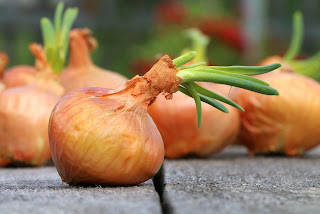
Management
- A week before harvesting 2000 ppm MH sprayed to reduce the sprouting and rotting in storage.
- Grow varieties have tightly closed neck ends.
- A dose of 12000 units (5-15 K rad) of gamma-ray after harvest in May -June effectively inhibits sprouting of onions
- Maintain proper storage facilities like ventilation, temperature, humidity
- Proper curing of the bulb before storage.
- Apply the recommended dose of NPK fertilizes.
- Cold storage temperature should be 0 – 2.20C for long time storage of onion bulbs.
